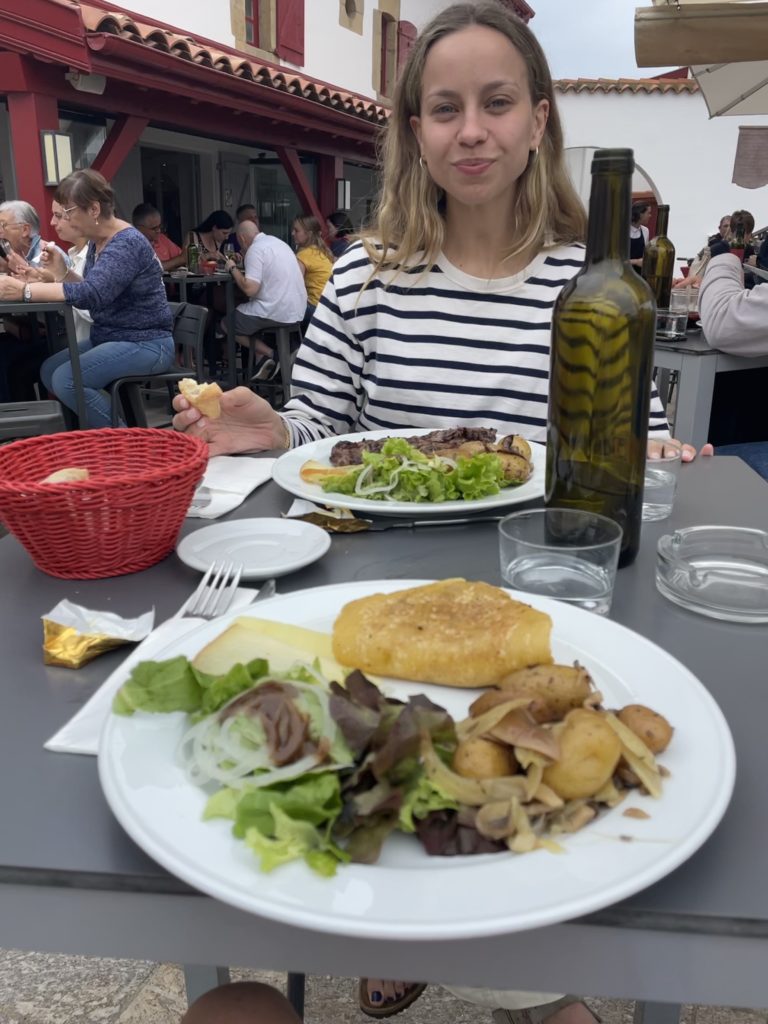Staying in a hostel has been full of “bonjour!” and “au revoir!” almost everyday, with new people coming and going, some staying for 3 weeks, while others stay for 3 nights. It has been really enriching staying in such a multicultural environment, where I have met people from all over the world from all walks of life. Along with that comes plenty of delicious food! Nami House, the hostel I have been staying at, hosts barbecues about each week, where everyone in the hostel brings something to share in the barbecue, while sharing how meals are typically prepared and eaten in their country.
The owners of the hostel also help ensure the guests in the hostel are immersed in French culture, so we will typically start with apéro, about an hour or so before we begin dinner. Apéro is a time where we all convene for a light snack or drinks and we will typically be snacking as we prepare our meals that we are sharing with the hostel. After apéro, we begin dinner, which in typical French fashion, typically will last around 2 hours or so. The long dinners are something I really value about French culture where it is a priority to join around a nice meal without any pressure of time, just enjoying each other’s company. I hope that this will be something I bring back to the states, where oftentimes I’d fall in the habit of keeping dinners with friends and family always less than an hour, typically more around 30 minutes or so. However, the emphasis on a non-rushed dinner provides a sense of calm in a hectic life.

In addition to enjoying French and international cuisine at the hostel, I have been to Bidart, a traditional Basque town, about a 45 minute bike ride from Anglet (which for my friend and I took about an hour and a half because it is quite a hilly coastal ride!) In Bidart, there is a lovely Basque market in the town square, surrounded by the picturesque white buildings with red shutters, in typical Basque fashion. My friend and I found a lovely restaurant in the middle of the town square, with a great view of the Bidart outdoor market. We ordered a taloa de chevre, which, as my waiter put it, a Basque version of fajitas. I was expecting some grilled sliced veggies with some sort of twist. To my pleasant surprise, I received a corn tortilla full of a round of goat cheese. I was slightly shocked to receive a tortilla decorated solely with some warmed goat cheese and calling that “fajitas” but I had absolutely no complaints. After discussing with the server further, I discovered that taloa is a popular street dish in the Basque Country. Taloa is a type of corn tortilla, with an interesting history of the native Basque Country corn, Grand Roux corn. In the 16th century, Grand Roux corn was a staple in the local diet, and was believed to have disappeared at the beginning of the 20th century. However, Grand Roux corn was rediscovered in the 1990s in a convent in Basque Country and was reintroduced into the French Basque diet and culture. In discussion with my friend from the Basque Country, he attested that taloa continues to be a staple in the Basque Country and is typically found in markets and festivals from street vendors.